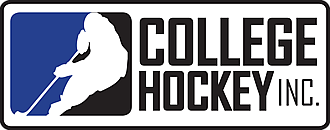Monday, June 9, 2025
CHI House Settlement FAQ
New Legislation Approved June 6

The House Settlement ushers in a new era in Division I college hockey and all of Division I college sports. Below is an updated resource on how this new legislation affects Division I college hockey specifically. This will be a continually updated resource.
What does it mean for a school to opt in to the House Settlement?
Answer: Division I Institutions that opt into the new structure will be able to share revenue with their student-athletes and will be bound by roster caps for their varsity teams. The approval of this settlement marks the beginning of a new era in college sport. Beginning July 1, 2025, participating colleges will directly pay athletes a share of up to 22% of the average power conference (B1G, ACC, BIG XII, SEC) athletic media, ticket and sponsorship revenue, a number initially thought to be $20.5 million for the annual cap. This number will be adjusted each year. Those payments will be in addition to both athletic scholarships and NIL deals athletes sign with third parties. To ensure revenue sharing with student-athletes is managed correctly, athletics departments will use the new College Athlete Payment System (CAPS) platform.
Under the House settlement, does every Division I institution have to provide revenue sharing to student-athletes?
Answer: No. Each Division I institution may decide whether to opt in to the House Settlement and how much of any new benefit to provide to student-athletes, up to the limitations set in the settlement. Each Division I conference may set their own rules for its members regarding additional benefits. However, if a Division I institution provides additional payments or benefits to student-athletes beyond what is currently permitted, the school is then held to the standards set in the settlement.
What does it mean for Division I men’s and women’s hockey programs that opt in to the House Settlement?
Answer: Institutions with Division I hockey programs that opt in to the House Settlement will be set with a roster cap of 26 players. A Division I institution will be allowed to grant up to 26 full athletic scholarships for the hockey team in addition to revenue sharing and NIL opportunities.
Can an institution opt in to the settlement on a team-by-team basis?
Answer: No. For Division I institutions providing additional payments or benefits to student-athletes beyond what is currently permitted, the terms of the settlement apply to all programs at a Division I institution and may not apply on a team-by-team basis.
What about DII, and DIII institutions with DI hockey programs?
Answer: DII and DIII institutions with DI men’s or women’s hockey programs may opt in to the settlement specifically to their men’s and women’s hockey teams. These programs would be capped at the 26 roster spots and have the ability to offer up to 26 athletic scholarships to their hockey programs.
Will Division I men’s and women’s hockey programs be required to provide full athletics scholarships to all 26 players on the roster?
Answer: No. All Division I athletics scholarships will be equivalency scholarships and institutions may provide any portion of a scholarship up to 26 for those institutions that opt in to the settlement.
When will the new roster limits for Division I men’s and women’s hockey take effect?
Answer: For Division I hockey programs, beginning in the 2025-26 academic year, schools that opt in to the House Settlement with roster caps must be at or below the roster limits no later than December 1 or the first countable game of the season.
What happens to a student-athlete who loses a roster spot due to the roster cap legislation?
Answer: Under the new settlement Division I schools will have the option to exempt any athlete who was on a roster in 24-25, who has been or would have been removed for 2025-26 because of the new roster limits for the remainder or their career. It also lets schools/teams accommodate any high school senior who was recruited to be or was assured they would be on a Division I roster for the 2025-26 season. These athletes will be identified by the institutions as “Designated Student-Athletes” for the remainders of their career. Athletes who feel they should be designated as such should contact their on-campus compliance office.
What are the parameters for a Division I men’s or women’s hockey program at an institution that does not opt in to the settlement?
Answer: The hockey programs will operate under the current structure of 18 equivalency scholarships for their hockey program. All existing Division I legislation remains in effect. However, one change will be that all student-athletes will need to report Name, Image and Likeness income exceeding $600.
How does the House Settlement affect Name, Image and Likeness legislation?
Answer: Regardless of whether an institution opts in, all Division I student-athletes must disclose all third-party NIL deals worth $600 or more. The College Sports Commission (CSC) – an independent body that will be responsible for governing revenue sharing, Name, Image and Likeness (NIL) deals and roster limits – will govern and oversee all third-party NIL deals. The CSC will investigate any violations of these rules and administer penalties for violations of these rules. The CSC, in collaboration with Deloitte, will oversee compliance of NIL through the NIL Go platform. This portal will review the third-party NIL deals over $600 to ensure they meet fair market value and valid business purposes.
